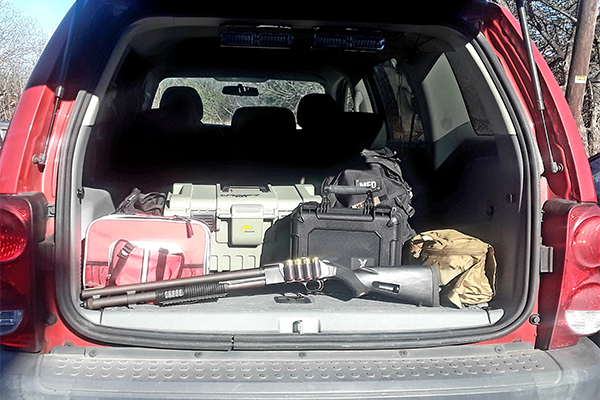
By Carlos Huerta
What is Vehicle EDC (VEDC) gear?
You likely have an Everyday Carry kit, but do you have Vehicle Everyday Carry gear? A lot of people keep fire extinguishers and first aid kits in their homes. They’ll have plenty of food and water as well as their other comforts at home. But what about the stores in your vehicle?
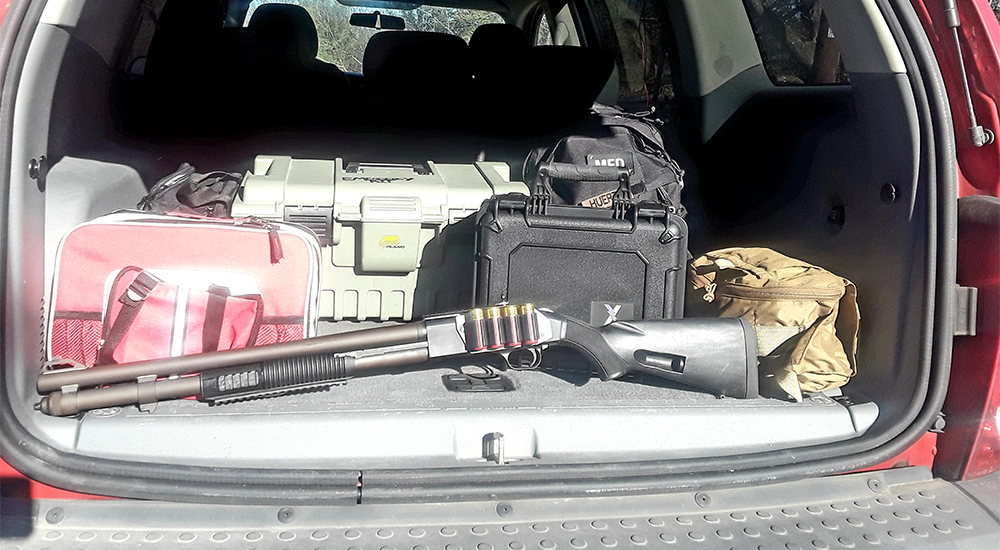
Your vehicle EDC gear are supplies that can be easily stored in your vehicle, whether it’s in a lock box or hidden away in different areas. This EDC gear gives you that advantage in situations where survival or simple convenience requires them. My Vehicle EDC is my backup system to what I carry on a basis. It’s my second line of defense. Whatever I have on me is my first line and what I have in the car is my second line. Just like my personal EDC gear that I carry on my person, I might not use any on my VEDC on a day-to-day basis. I might not use it for months, but I know it’s there when I need it. Your VEDC gear is an extension of your regular EDC gear but doesn’t take the place of your Bug Out Bag. Every person is different. We all have different vehicles, commutes, and different priorities and concerns. Let’s look at a typical VEDC list to start.
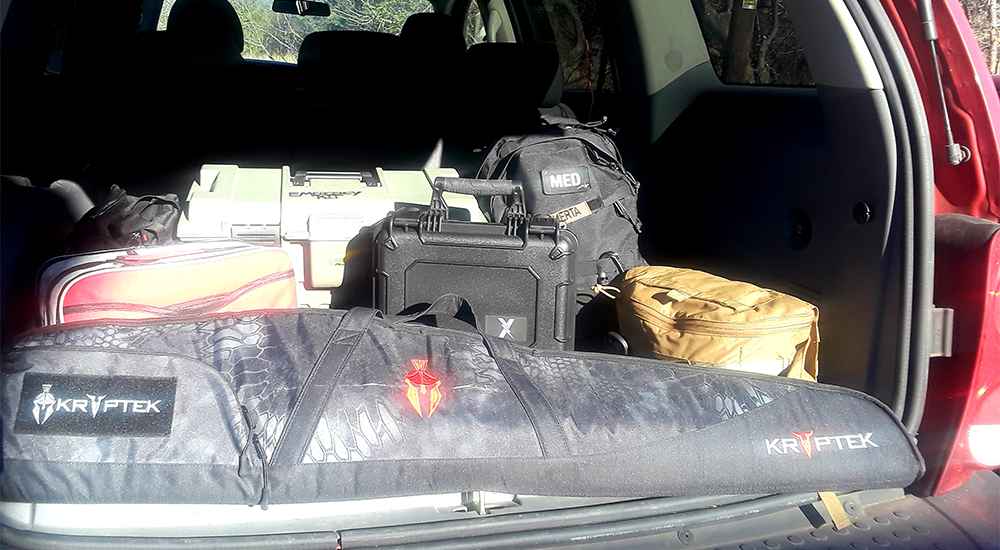
Typical Vehicle EDC List
Long Gun
You could choose a shotgun or an AR-15 as your long gun. I prefer a shotgun because it’s inexpensive and reliable. If anything were to happen to it, I’m not losing a lot of money. Also with a shotgun, I can use lethal or non-lethal shell rounds. Depending on the shells, shotguns can have a good range. I have a Mossberg 590 Tactical tucked away in the back of my SUV. It’s a 12 gauge, pump action shotgun with an 8+1 round capacity. The Mossberg gives me a long gun with a multipurpose. I have more versatility with a shotgun than an AR-15. However, I do have less rounds with a shotgun, but I could have multiple shotgun ammo belts ready to go and I’m still not breaking the bank.
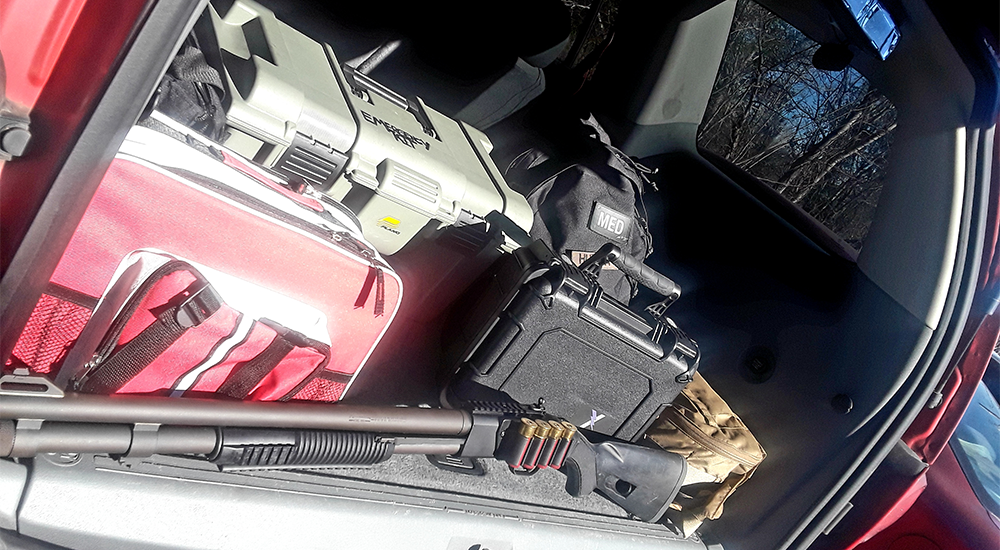
Trauma Kit
Most of the time, you’ll need a decent first aid kit for headaches and scratches. However, for severe injuries, you’ll need a complete trauma kit. Trauma kits usually only consist of a few items with multiple uses. Injuries such as broken bones, lacerations, or severe bleeding require a trauma kit. If you carry your handgun, then you need to have a trauma kit accessible to you. It prepares you for those worst case scenarios. Even if it never gets used, it’s always a great idea to have it.
Flashlight
When I say a flashlight, I mean a good flashlight. The last thing you want is a cheaply made flashlight breaking on you the moment you need it. I keep a Surefire Tactician as my VEDC. It’s a LED, drop resistant, reliable, and versatile flashlight. The Tactician is handy and small enough to store anywhere. Flashlights have multiple uses. The Tactician can be used as a defensive tool, a signal, or illumination for the scene.
Small Go Bag
My Go Bag is where I store my extra ammunition, chemlights, spare clothes, combat knife, flares, and a survival kit. My Go Bag mainly looks like an active shooter bag. If all I can grab is my Go Bag and my long gun then that’s all I need. I literally just grab and go. In my Go Bag, I have AR500 body armor stored away for when I need it. Having body armor as part of your VEDC is optional, but it’s worth considering. The AR500 vest is for the extra ballistic protection. The risk of having body armor in your vehicle is if someone breaks in and steels my armor then I’ve lost a few hundred dollars.
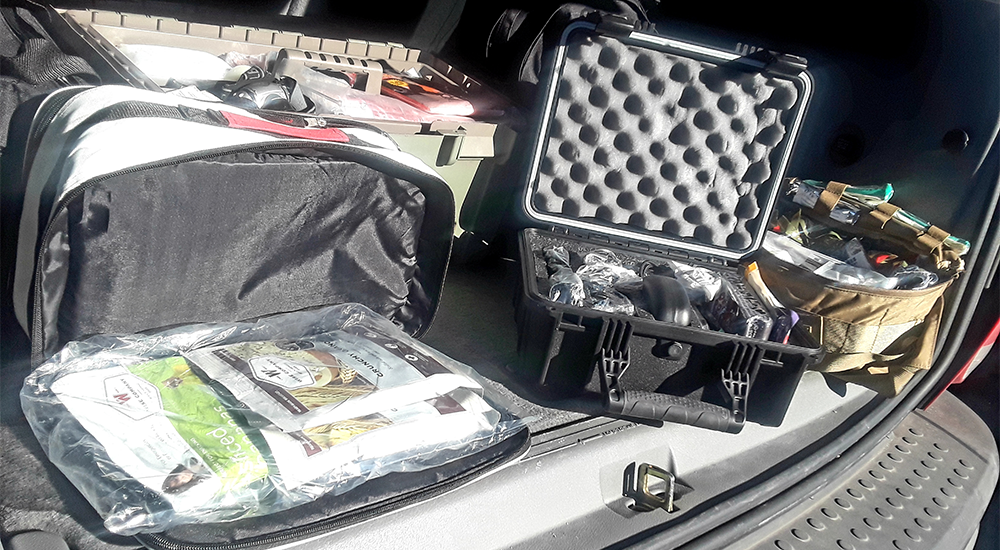
Next in my Go bag, I have a backup handgun with extra ammunition. This is also optional. I wouldn’t choose an expensive handgun. I went with a Armscor M200 Revolver. It’s cheap, reliable, and easy to use. If anything should to happen to my primary handgun, then I have that backup.
Finally, if you’re going to break down, the odds are really good that it’ll be at night. Keep at least 6 flares and other illumniation in your bag for this purpose. Flares can be used day or night, and you’ll want the oncoming traffic to see you. Chemlights are just heavy duty glow sticks. They are mainly used as a backup light.
Auto Emergency Kit
In my SUV, I keep a Vehicle Emergency Auto Kit in the back. The WISE Company Vehicle Emergency Auto kit comes with the major items I’ll need in most circumstances. The Emergency Auto kit is a multi-pocket bag that comes with one reflector stripe, a folding floor mat, premium jumper cables, 13ft. tow rope, hand crank flashlight, 5-in-1 survival whistle, a 37 piece first aid kit, Mylar emergency blanket, duct tape, food, and water. The food items are 4 servings of granola, 8 servings of freeze dried bananas, Hi-cal Energy bar, and 4 water pouches (4.25oz each). The Vehicle Emergency Auto kit is a good starter kit for those who are beginning to prep or new to prepping. WISE all-in-one auto kit contains food, water, first aid, and warmth all in one preparedness kit for your vehicle. You definitely need water stored in your vehicle, especially during a summer in Texas. You never want to break down without water. The kit has the essentials and over time you can alter or add to it. A kit like this will get me out of trouble until help arrives.
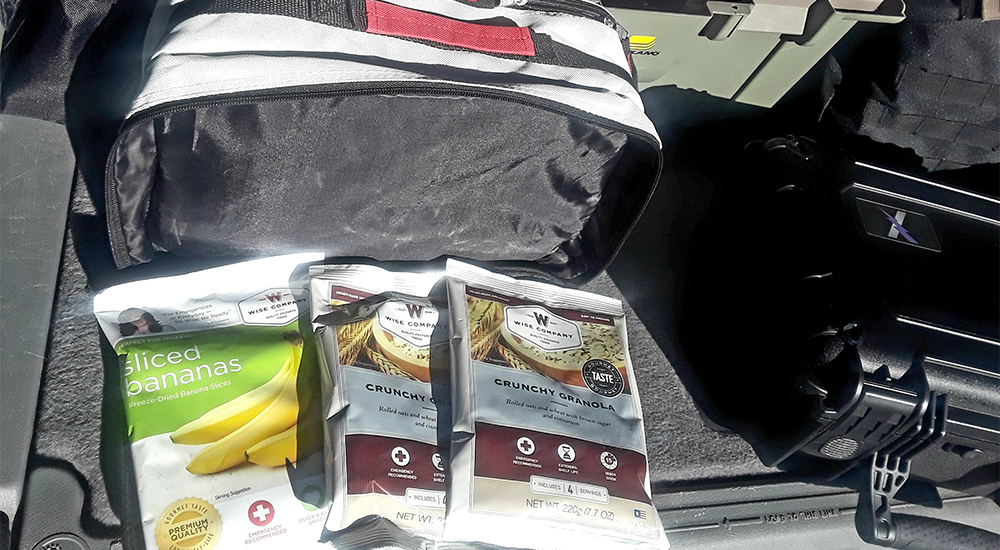
Multi-tool or Knife
A knife or a multi-tool is something that you’re always going to need and use. Again, don’t put cheap tools in your VEDC kit. You are going to need a reliable and sturdy multi-tool. I love my Leatherman multi-tool. It gives me the tools for different task. I never leave home without it. That’s the one item I use on a daily basis. I also have my Glock Entrenchment knife in my VEDC kit. It’s sturdy and it’s what I prefer. The last thing you want is your tools breaking on you when you’re already in a stressful situation.
How do you store your VEDC gear?
You have all of this gear but now where do you store it? Some people would hide their VEDC gear in all of the nooks and crannies in their cars, and it does help prevent break ins. I would suggest choosing a suitable container for hiding and storing your gear. With multiple containers, you are able to separate and organize your supplies. Backpacks also help organize your gear. Since I have a larger SUV, a hunting storage box that can be locked is how I store my VEDC. To prevent theft, I’ve even see people bolt their VEDC containers into the back of their SUV’s. The vehicle you have will obviously play a part on where everything goes.
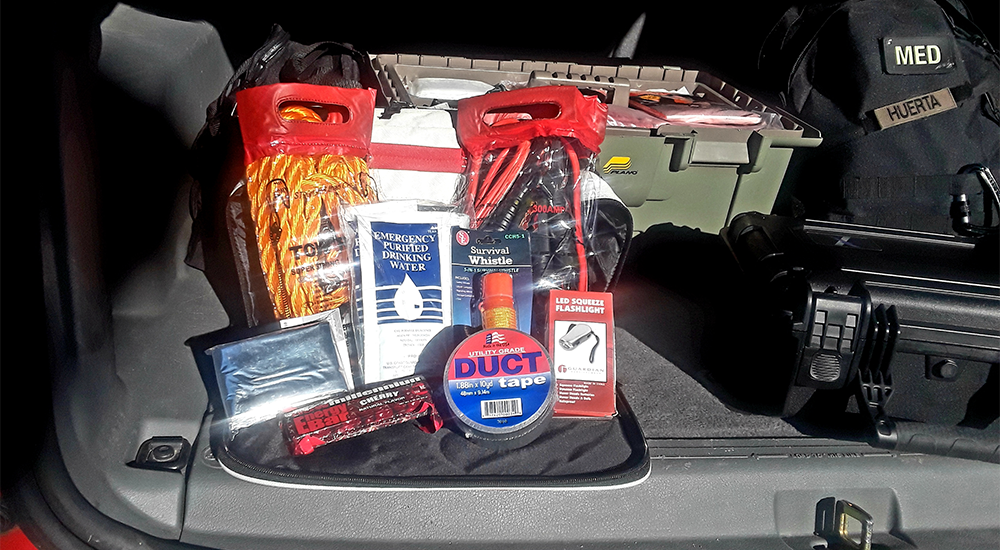
When building a VEDC kit for your vehicle, keep in mind about whose going to be in the car with you. Be sure to pack enough food, water, and supplies not only for you but for the people or animals who live with you.
Stay Prepared
This does seem like a lot of supplies to store in the back of your vehicle, but trust me, it’s all worth it. Just like your EDC, emergency supplies in your vehicle will vary depending on the season and your location. I’m not relying solely on my vehicle gear, it’s my second line of defense. My Vehicle EDC list isn’t set in stone, it’s a start. Over time it’ll evolve, and I’ll change it up when I see fit. There’s a lot of “what if’s” scenarios out there these days. We don’t think about it much but anything could go wrong. I may not get to use my gear everyday but it gives me that comfort knowing I have it ready to go.




Leave a Reply